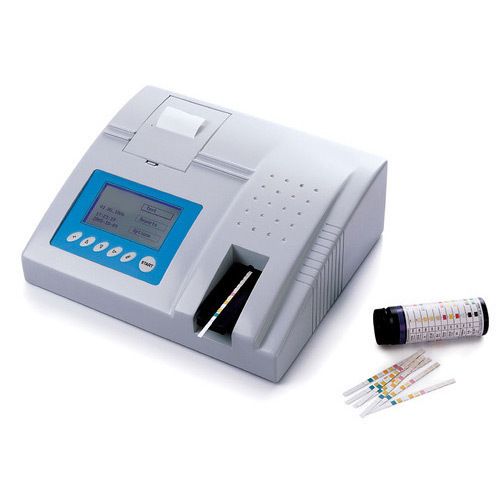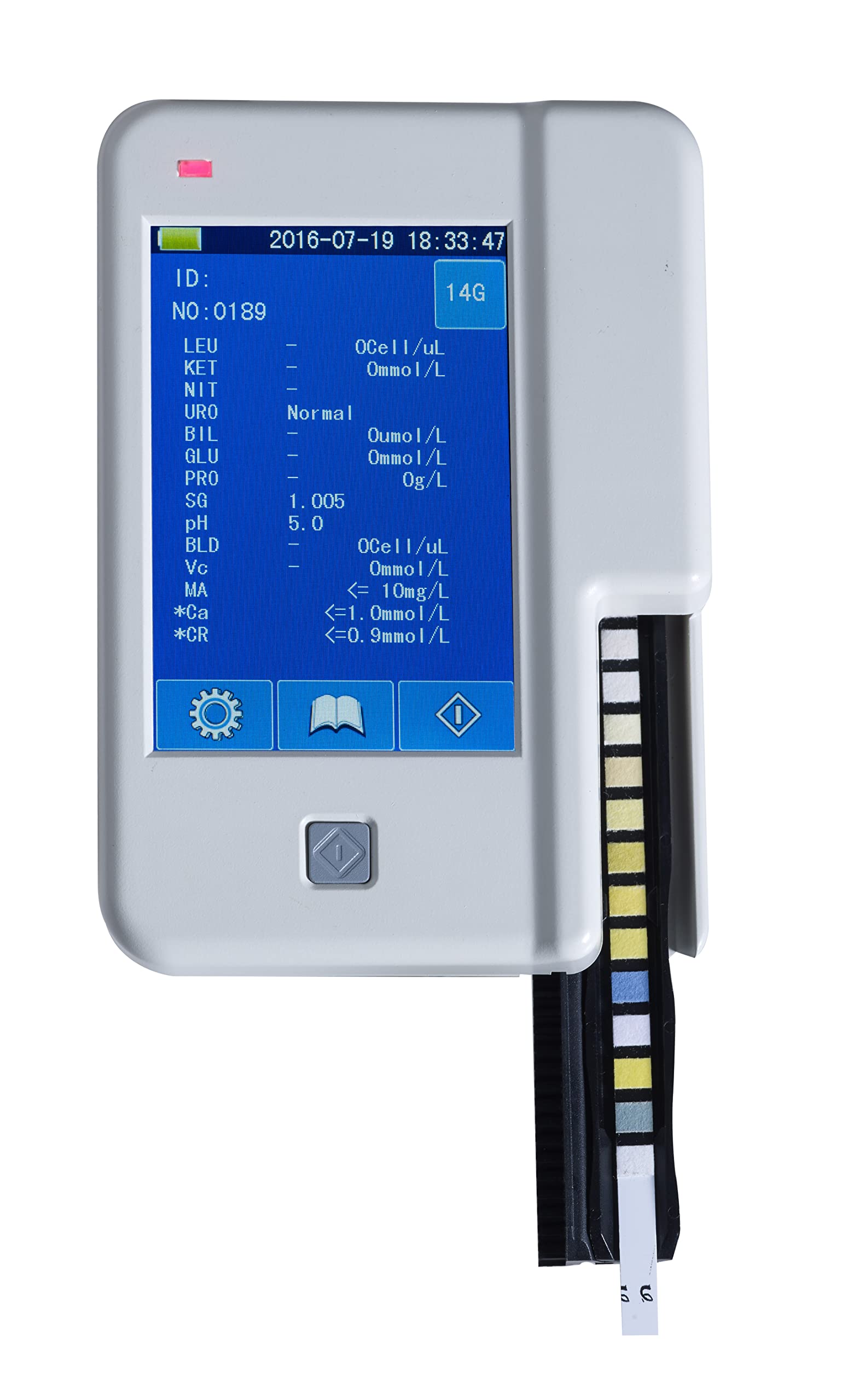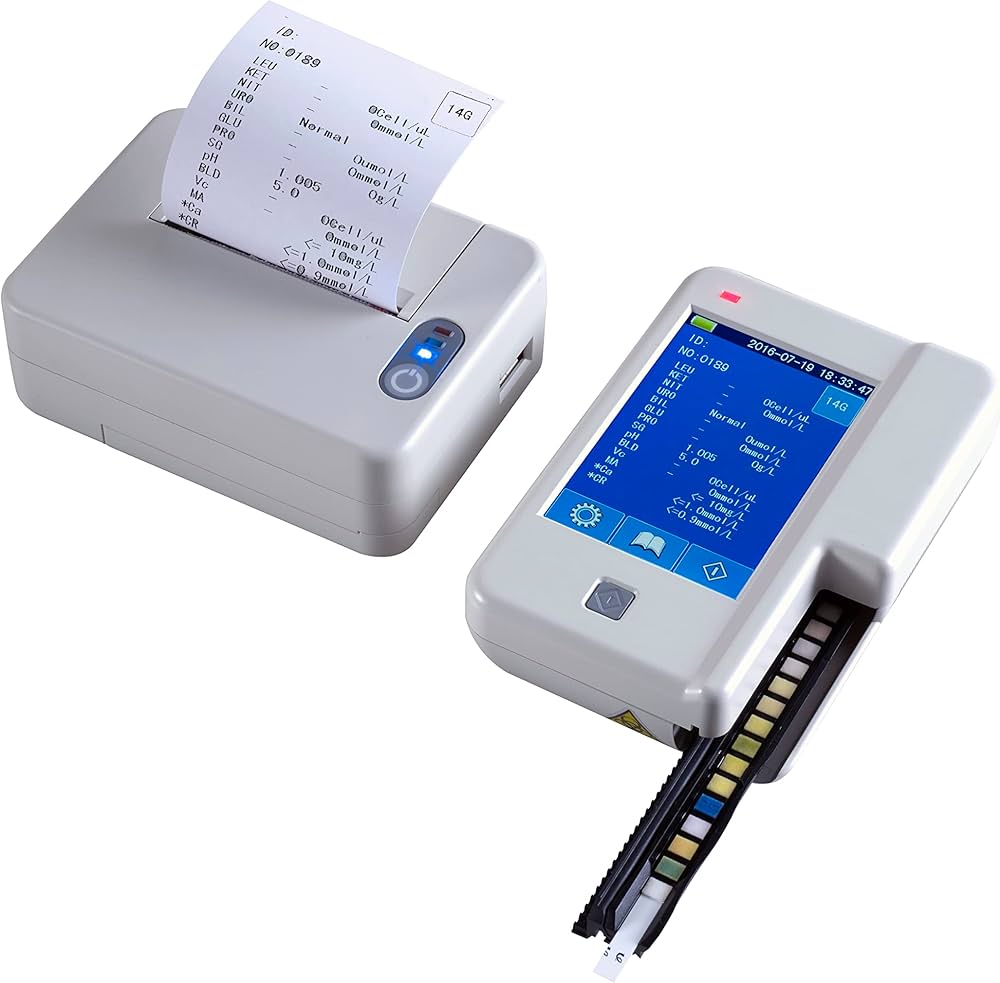Description
A urine analyzer is a medical device used to test urine samples for various parameters, helping in the diagnosis and monitoring of health conditions. Here’s how it works and its key features:
How It Works:
- Sample Collection: A urine sample is collected, usually in a sterile container.
- Preparation: The sample may be mixed or prepared according to the analyzer’s requirements.
- Testing Process:
- Reagent Strips: Many analyzers use reagent strips that change color based on the chemical composition of the urine.
- Optical Sensors: Some devices have optical sensors that read the color changes and analyze the results.
- Impedance or Conductivity: Other methods may involve measuring the impedance or conductivity of the urine sample.
- Data Analysis: The analyzer processes the data and compares it to reference values, generating results for various parameters.
- Output: Results are displayed on a screen, printed, or sent to a computer system for further analysis.
Key Features:
- Multi-Parameter Testing: Can test for various substances, including glucose, protein, pH, specific gravity, ketones, bilirubin, and more.
- Rapid Results: Provides quick results, often within minutes, facilitating timely diagnosis.
- User-Friendly Interface: Many analyzers feature touch screens and intuitive menus for easy operation.
- Data Management: Some models can store results, track patient history, and connect to laboratory information systems (LIS).
- Quality Control: Built-in quality control features ensure accurate and reliable results.
- Portability: Some urine analyzers are compact and portable, suitable for point-of-care testing.
These devices are widely used in hospitals, clinics, and laboratories for routine urinalysis and can significantly aid in patient care.




Reviews
There are no reviews yet.